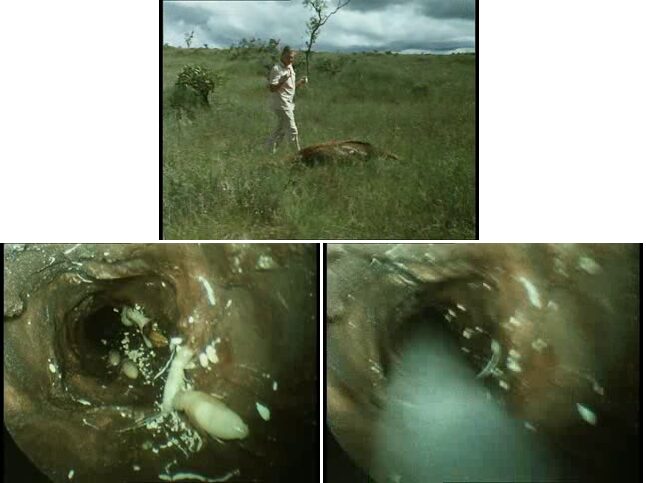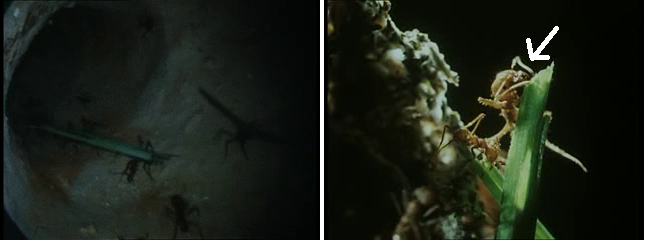Original air date: 23 February 1984

Below there is a more detailed look at the timeline

Selected material
Story telling – ode to grass (1’03-1’22)

Attenborough’s words:
“These beautiful flowers belong to one of the most successful, the most widespread and the commonest of plants. There are about 10,000 species in this one family, and they claim over a quarter of all the vegetated land on earth. They are pollinated by the wind, they need far less water than most trees, and they can survive both burning and freezing. They are the grasses.”
Story telling in a different way – A pocket gopher working from underground (26’43-26’57)

A piece of straw being pulled down into the snow (composite picture on the left, the arrow is meant to point out that the straw on the right is lower than on the left) – and a pocket gopher (on the right) gnawing at the root of that piece of straw (arrow pointing at the root which would otherwise only be visible on film).
Filming inside a termite mound (4’20-4’53)

Above is Attenborough walking downwind from a giant anteater and bottom are termites sticking to the inside of their mound (left). Right frame shows the tongue of the termite licking the walls after it has ripped the mound open with its powerful paws.
More brilliant camerawork (inside the ants’ nest):
Farming, the ants’ way – mainly filmed underground (8′-11′)

Ants laboriously carry stems of grass to their underground tunnels (left) where they are fed to a fungus that grows nowhere else but in these nests. First they have to meticulously remove every piece of spore from any other fungus from the stem (right, arrow points at one of its antennae doing so).
Their tunnels do not only contain chambers for growing fungus, they also contain a rubbish dump and a cemetery further down some 20 feet (obviously also filmed underground, 11’10).
Other animals apparently seem to farm their land too
Farming, found among wild animals, could be found in TWO separate occasions in this programme. The second one being prairie dogs (34’20) that REMOVE plants they don’t like and keep the grass in their neighbourhood succulent by constantly trimming it. A more recent discovery indicates farming among lyrebirds. There is also a lot of ‘farming’ in the Plants series (Living Together) where various animals are keeping algae inside them. Humans are not the only farmers !

Introducing what’s coming up:
“…And the grass, too, will spring again, this remarkable plant that can survive intense grazing and burning and flooding. The one thing it can’t tolerate is drought. If there is just a little less rain, then its leaves wither, its roots shrivel and can no longer hold the soil together, so that the wind can catch it and blow away the small nutritious particles. And then it’s reduced to little more than sand and the land becomes a desert. And it’s to deserts that we’re going in the next programme.”